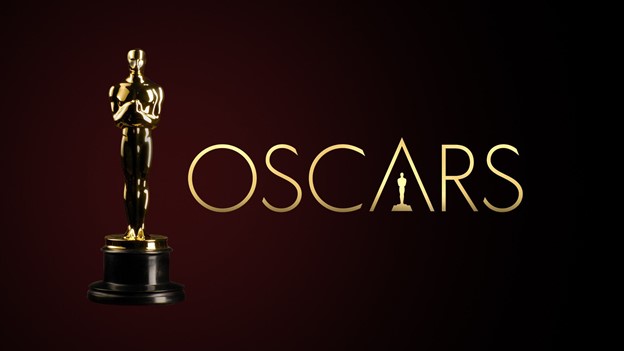
We’re less than a week away from the 93rd Academy Awards ceremony. At my house, that means we are catching up on all the nominated films.
As I’ve watched, I’ve been struck by how many lessons for improving public involvement processes can be found throughout this year’s slate of films.
Inclusive Engagement
Judas and the Black Messiah is based on the true story of FBI informant William O’Neal and his role in the 1969 killing of Fred Hampton, chairman of the Illinois chapter of the Black Panther Party. This Best Picture nominee shows the importance of diversity, equity, and inclusion and community-led outreach. And this message resonates just as powerfully today as it did while Hampton was alive.
A community-led approach to public involvement means actively listening to the community you are working in about their needs, planning collaboratively with community members, and modifying and reshaping activities based upon community input. The community must be actively involved in defining and measuring outcomes.
In the film, we see Hampton’s Black Panthers work to form the multiracial Rainbow Coalition, a powerful force for community-led action and change. If government officials had tapped into this network instead of opposing it as they did at the time, results could have been wildly different.
One Night in Miami, up for three Oscars including Best Supporting Actor, builds on this theme in a quieter way. The film fictionalizes a real-life meeting of Malcolm X, Muhammad Ali, Jim Brown, and Sam Cooke in February 1964. They are four men coming from different perspectives, but they have the same goals when it comes to combatting systemic racism.
Public involvement processes too often only do the bare minimum when it comes to diversity, asking one person to represent an entire population or group. Their conversations in the film remind us to celebrate the diversity in experience and approach, making sure to reach and include the most comprehensive audience possible.
Both films highlight the desire of and need for marginalized communities to have a seat at the table. In the public involvement process, it’s important for us to evaluate the processes we have in place and make sure they include all individuals—especially those who have historically been left out of the planning process.
Accessibility from All Angles
When we think about inclusion, we also need to consider accessibility in all facets of our public engagement process.
Crip Camp, my pick for Best Documentary, provides a very enlightening look into the development of the Americans with Disabilities Act (ADA). To me, it was very eye opening to see what conditions people with physical disabilities were faced with prior to the passing of this act.
But it’s not enough to just be ADA-compliant. The process to get accommodations should be simple, clear, and prominently displayed.
The Sound of Metal, which is nominated for Best Picture, also stresses the importance of accessibility. The film follows drummer who loses his hearing and who must learn to adapt to his new reality.
The most striking piece of this film to me was how crucially it stressed that disabilities are not deficiencies. We should approach accessibility in public involvement with this same mindset. It should be built in from the very beginning, not be an afterthought.
A Safe Place for Free Speech
The public involvement process with environmental planning is often seen as the place to express opposition or support for a project. While we know that typically the process is not a vote, the general public can sometimes use it to rally opposition for a project and we can sometimes see meetings become contentious and attract protests.
The Trial of Chicago 7, a nominee for Best Picture, highlights our responsibility to provide a safe place for people to express their First Amendment rights. The film offers a dramatic retelling of the trial of the antiwar activists charged with inciting a riot at the 1968 Democratic National Convention, known as the Chicago Seven. The entire story provides a blueprint for what not to do.
If I expect protests for a project, I work with my clients to develop security plans in partnership with meeting venues to ensure there is a safe place for expression of first amendment rights and everyone knows what to do if things should escalate. I’ve also seen success working directly with protest organizers to understand their plans and to inform them of the meeting ground rules.
Ensure Transparency
When you know you might face pushback, it is tempting to want to limit the information flow. Over the years, I have had many conversations with clients that are afraid to share information because they are worried about the ramifications. Transparency not only contributes to equity, but it often leads to better results overall.
Collective, an Oscar nominee for Best Documentary, offers an extreme example of the power of the open sharing of information. The film is based on a 2015 fire in Romania that immediately killed 27 people and injured more than a hundred others. Four months after the fire, the death toll had risen to 64, partially due to the lack of proper healthcare and negligible medical care at the public hospitals. The documentary explores public healthcare fraud, corruption, and maladministration.
For me what stood out about this documentary, is not just the horrifying and haunting footage of the disaster itself, but the way the Minister of Health opened his doors to the documentary film crew. They are showing everything in the wake of this disaster, the corruption and cover ups. He even admits the country is not equipped to handle severe burn cases and, at one point, asks a member of the public for advice on how to solve this problem. His transparency empowers the general public and subject matter experts to weigh in on crucial decisions. This documentary is an extreme, but it shows how trust can be built by sharing information that would have otherwise perhaps been covered up.
Lessons for public engagement can be found all around us, even in pop culture. Did you have any takeaways from this year’s Oscars slate?
